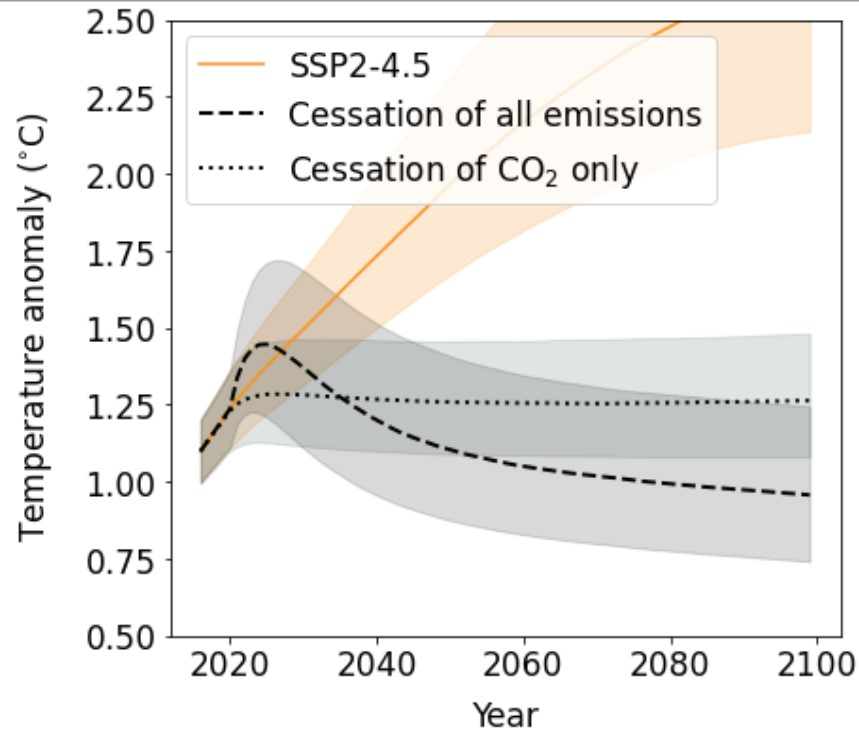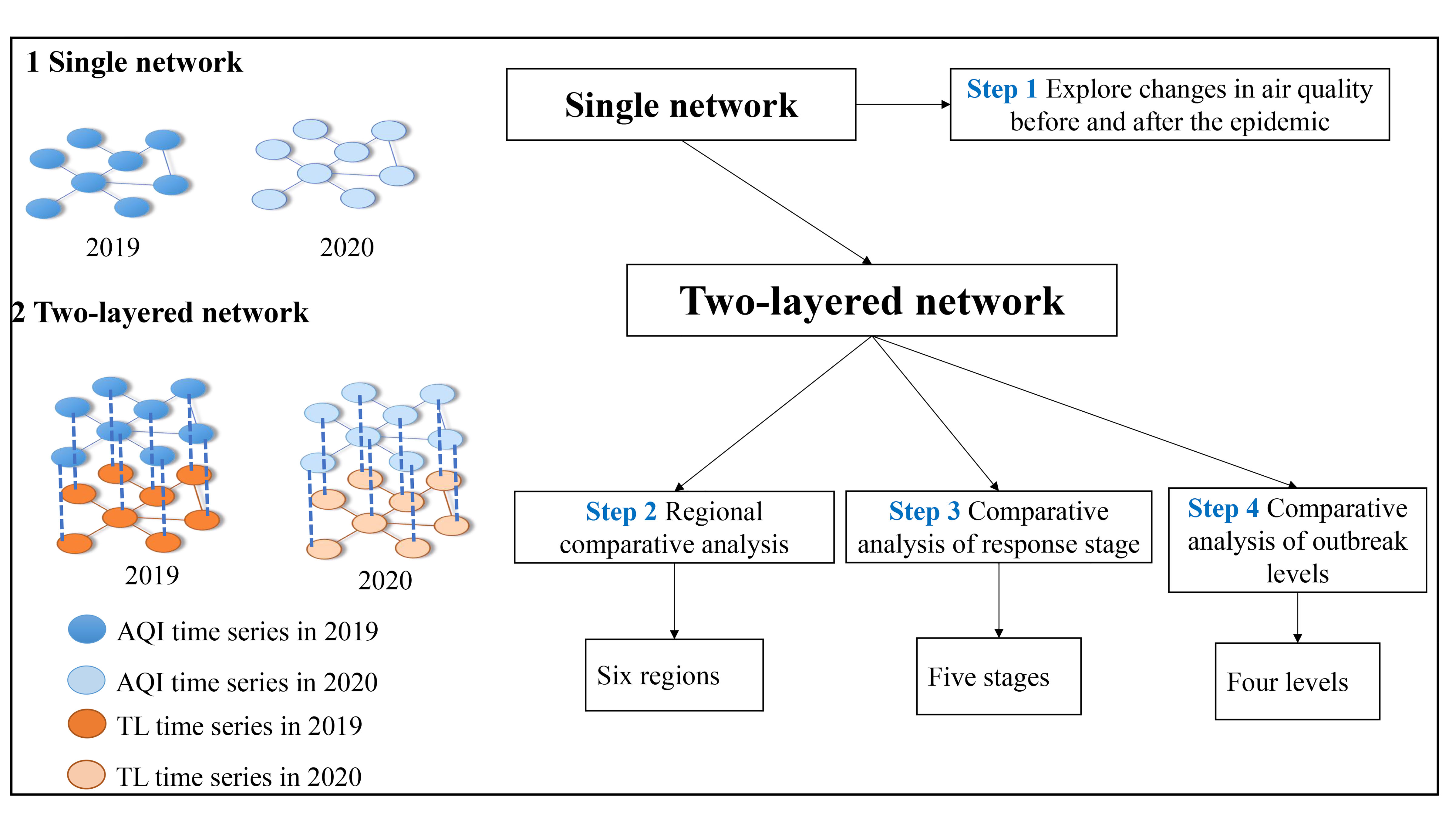The Indian River Lagoon (IRL) is a bull shark nursery habitat crucial to survival and recruitment of Atlantic coast bull sharks. Analysis of 123 samples found the presence of one or more phycotoxin from harmful algal blooms in 82 percent of the bull sharks and their prey items. Findings highlight the potential threat of toxic algae to the IRL’s ecosystem and surrounding human populations that may consume the same prey species. The highest concentrations of most toxins were detected in gut content samples, highlighting dietary exposure as an important mechanism of toxin transfer to bull sharks in the system.
Tag: Pollution
Review: Are Climate Change and Air Pollution Making Neurologic Diseases Worse?
People with neurologic diseases like headache, dementia, multiple sclerosis (MS) and Parkinson’s disease may experience worsening symptoms due to climate change, according to a scoping review of research published in the November 16, 2022, online issue of Neurology®, the medical journal of the American Academy of Neurology.
Blind spots in the monitoring of plastic waste
Whether in drinking water, food or even in the air: plastic is a global problem – and the full extent of this pollution may go beyond of what we know yet. Researchers at the Karlsruhe Institute of Technology (KIT), together with partners from the Netherlands and Australia, have reviewed conventional assumptions for the transport of plastic in rivers.
Low-Cost Air Quality Sensors Deliver Insights on Environmental Injustice
Networks of low-cost air quality sensors are able to detect temporary peaks and “hot spots” in air pollution and could be a better tool for tracking short-term changes in air quality in communities than regulatory sensors. Monitoring fine-scale, real-time changes in air pollution could support efforts to protect public health.

Study shows hazardous herbicide chemical goes airborne
New research from the lab of Kimberly Parker at the McKelvey School of Engineering shows that amines, sometimes used as an additive in herbicides, can enter the atmosphere, where they pose risks for human health and alter the atmosphere.
Does Traffic-Related Air Pollution Increase Risk of Dementia?
Higher exposure to a certain type of traffic-related air pollution called particulate matter may be linked to an increased risk of dementia, according to a meta-analysis published in the October 26, 2022, online issue of Neurology®, the medical journal of the American Academy of Neurology. Researchers specifically looked at fine particulate matter, PM2.5, which consists of pollutant particles of less than 2.5 microns in diameter suspended in air. The meta-analysis included all available studies on air pollution and risk of dementia.
Electric buses can be ‘mobile batteries’, keeping lights on when power cuts
The Biden administration is awarding grants to school districts around the country, totaling about $1 billion, to purchase about 2500 electric school buses. The administration touts electrifying school buses as an important step for reducing emissions and pollution, but the…
Today: ANA2022 Media Roundtable to Spotlight Latest in Neuro Research
As the American Neurological Association’s 147th Annual Meeting wraps up today, October 25, the ANA is holding a Media Roundtable at 11 a.m. U.S. Central for reporters to access the latest developments in neurology and neuroscience.
BGSU researcher helps create process to decompose plastic on demand
The plastic, made from a chemical found in the extract of a vanilla bean, degrades when exposed to a specific wavelength of light
As Winters Warm, Nutrient Pollution Threatens 40% of U.S.
Scientists are ringing alarm bells about a significant new threat to U.S. water quality: as winters warm due to climate change, they are unleashing large amounts of nutrient pollution into lakes, rivers, and streams.
The first-of-its-kind national study finds that previously frozen winter nutrient pollution—unlocked by rising winter temperatures and rainfall—is putting water quality at risk in 40% of the contiguous U.S., including over 40 states.
Chula Launches a Bioproduct “Microbes to Clean Up Oil Spill in the Ocean”
Chula Faculty of Science has developed bioproducts to clean up oil spills in the ocean from their research on oil-eating microbes while getting ready to expand to industrial-scale production for ecological sustainability.
FAU Seeks Participants for Study on Health Effects of Harmful Algal Blooms
With another grant from the Florida Department of Health, FAU researchers will continue a first-of-its-kind evaluation of both the short-term and potential long-term health effects of harmful algal blooms among Florida residents.
Studies in Bangladesh detail how e-waste recycling exposes workers to chemicals
“Discarded electronics contain a lot of different types of toxic chemicals, metals and carcinogens, which can affect the environment and human health. Our research is looking into the extent of environmental pollution and human health effects from electronic waste,” Aich says.

WashU Expert: Jackson water issues result of environmental racism
The increasing demand for electric vehicles and cell phones has accelerated the need for safer energy storage after numerous instances of commercial lithium-ion batteries overheating and catching fire. Peng Bai, assistant professor of energy, environmental & chemical engineering in the McKelvey School of Engineering at Washington University in St.
Tracking air pollution disparities — daily — from space (video)
Today, scientists report preliminary work calculating how inequities in pollution exposure fluctuate daily across 11 major U.S. cities. And in some places, climate change could exacerbate these differences. They will present their results at ACS Fall 2022.
Water Quality Woes in Southwest Florida Linked to Seeping Septic Systems
From fecal bacteria to blue-green algae to red tides, Southwest Florida’s water quality has declined as its population has increased. Multiple lines of evidence from a multi-year microbial source tracking study points to septic systems as a contributing source for this decline. The study is one of few to connect downstream harmful algal blooms with nutrient loading from upstream septic systems. These water quality issues are caused by aging septic systems installed in high densities in areas with shallow water tables. Septic systems may actually be sitting in groundwater during certain times of the year, which means that they cannot function properly.
Research reveals why tackling particle pollution leads to rise in photochemical smog
Researchers from the University of York have discovered why reducing particle pollution is actually increasing surface ozone pollution in some emerging economies, negatively impacting health, ecosystems and agriculture.
Unchecked emissions could double heat-related child mortality
If carbon emissions are limited to slow temperature rise, up to an estimated 6,000 child deaths could be prevented in Africa each year, according to new research. A team of international scientists, led by the University of Leeds in collaboration with researchers at the London School of Hygiene & Tropical Medicine (LSHTM), have shown that thousands of heat-related child deaths could be prevented if temperature increases are limited to the Paris Agreement’s 1.5ºC target through to 2050.
Study shows chemical’s extent in Fairbanks winter air
A chemical compound discovered in 2019 in Fairbanks’ wintertime air accounts for a significant portion of the community’s fine particulate pollution, according to new research that seeks to better understand the causes and makeup of the dirty air.
Specific Environmental Exposures may Help Predict Increased Risk of Death from Cardiovascular Disease
A new study from the Icahn School of Medicine at Mount Sinai quantifies the cardiovascular risk posed by exposure to specific environmental factors, showing, for example, that air pollution heightens the risk of heart disease mortality by 17 percent.
Tiny fish-shaped robot ‘swims’ around picking up microplastics
Researchers in ACS’ Nano Letters report having created a light-activated fish robot that “swims” around quickly, picking up and removing microplastics from the environment.
Nature Journal Publishes UTEP-Led Pollution Study
Residents of public housing throughout the United States experience higher levels of air pollution, according to an inter-institutional study led by a researcher from The University of Texas at El Paso that appeared in Scientific Reports, one of Nature’s portfolio of journals.
Citizens Are More Supportive of Climate Action After COVID-19, but More Pessimistic in Their Expectations
Most of the Spanish population is pessimistic about the future climate actions by the government and citizens after the impact of COVID-19.

Including all types of emissions shortens timeline to reach Paris Agreement temperature targets
Instead of focusing on carbon dioxide’s effect on future temperature, new research includes the related human-generated emissions of methane, nitrogen oxide and particle pollution. Expanding the scope increases the amount of future warming that is already guaranteed by past emissions, and shortens the timeline to reach the Paris Agreement temperature targets.
Does the Size of Air Pollution Particles Affect a Person’s Risk of Death from Stroke?
Living in areas with higher air pollution is associated with an increased risk of in-hospital death from stroke, and the risk varies depending on the size of the air pollution particles, according to a new study published in the May 25, 2022, online issue of Neurology®, the medical journal of the American Academy of Neurology.
Scientists call for cap on production to end plastic pollution
Now, after the United Nations’ historic decision to adopt a global treaty to end plastic pollution earlier this year, governmental negotiations on the agreement are set to begin on May 30th.

COVID-19 Lockdown Measures Affect Air Pollution from Cities Differently
In Chaos, researchers in China created a network model drawn from the traffic index and air quality index of 21 cities across six regions in their country to quantify how traffic emissions from one city affect another. They leveraged data from COVID-19 lockdown procedures to better explain the relationship between traffic and air pollution and turned to a weighted climate network framework to model each city as a node using data from 2019 and 2020. They added a two-layer network that incorporated different regions, lockdown stages, and outbreak levels.
UN’s Sustainable Development Goals (SDGs) have impact on textile wastewater pollution research
The world’s research effort into wastewater pollution caused by the textiles industry has increased threefold over the past five years, according to a new analysis released this week in the lead up to Earth Day (Friday 22 April).
Sustainable, biodegradable, vegan glitter – from your fruit bowl
Glitter is the bane of every parent and primary school teacher. But beyond its general annoyance factor, it’s also made of toxic and unsustainable materials, and contributes to plastic pollution.
Researchers Link Pollution to Cardiovascular Disease, Develop Strategies to Reduce Exposure and Encourage Government Intervention
In a new review article, published today in The New England Journal of Medicine, researchers from University Hospitals (UH), Case Western Reserve University and Boston College discuss evidence linking pollution and cardiovascular disease. The research team highlights strategies for reducing individual exposure to pollution, and the importance of government-supported interventions encouraging clean energy.
University of Oregon economist finds polluters sometimes game system to avoid penalties
Eric Zou, an assistant professor in the UO economics department, found that companies and in some cases government agencies will do what they can to help their communities’ air pollution levels meet federal standards, which he documented in a paper published earlier this year: “Unwatched Pollution: The Effect of Intermittent Monitoring on Air Quality.”
Climate change lowers nutrition, increases toxicity at base of food web
Climate change impacts on freshwater systems can lower nutrition and increase toxicity at the base of the food web, according to research from Dartmouth College and the Swedish University of Agricultural Sciences.
AI-driven dynamic face mask adapts to exercise, pollution levels
Researchers reporting in ACS Nano have developed a dynamic respirator that modulates its pore size in response to changing conditions, such as exercise or air pollution levels, allowing the wearer to breathe easier when the highest levels of filtration are not required.
Coral reefs are 50% less able to provide food, jobs, and climate protection than in 1950s, putting millions at risk
The capacity of coral reefs to provide ecosystem services relied on by millions of people worldwide has declined by half since the 1950s, according to a new University of British Columbia-led study.
Argonne teams up with GEVO to apply lab’s GREET Model to company’s net-zero project
Argonne recently teamed up with a Colorado-based biofuel company to perform a critical lifecycle analysis of its Next Gen technology to produce renewable jet fuel from corn grain in what could be a game-changer in biofuel industry.
A super material applicable to batteries and other energy conversion devices
Researchers have discovered a material that is only four atoms thick and allows for the study of the motion of charged particles in only two dimensions. Such studies could lead to pivotal discoveries in solid electrolytes for batteries and other applications.
Researchers find eco-friendly way to dye blue jeans
Researchers from the University of Georgia developed a new indigo dyeing technology that’s kinder on the planet. The new technique reduces water usage and eliminates the toxic chemicals that make the dyeing process so environmentally damaging. And to top it off, the technology streamlines the process and secures more color than traditional methods.
False spring: Climate change may erode frogs’ ability to withstand salt pollution
Climate change may erode frogs’ ability to withstand road salt pollution, according to researchers at Binghamton University, State University of New York.
Bluefin Tuna Reveal Global Ocean Patterns of Mercury Pollution
Bluefin tuna, a long-lived migratory species that accumulates mercury as it ages, can be used as a global barometer of the heavy metal and the risk posed to ocean life and human health, according to a study by Rutgers and other institutions.
UCI is No. 2 in Sierra magazine’s 2021 ‘Cool Schools’ ranking of sustainability leaders
Irvine, Calif., Sept. 9, 2021 — The green streak continues! Sierra magazine has named the University of California, Irvine No. 2 overall in its annual “Cool Schools” ranking of sustainability leaders among U.S. and Canadian universities and colleges, marking the 12th time in a row that UCI has placed in the top 10 of the widely acclaimed list.
First global study of wildfire pollution reveals increase in mortality rate
The first study into the global impact of wildfire-related pollution and deaths comprehensively links short term exposure to wildfire-related fine particulate matters (PM2.5) in the air and all-cause, respiratory and cardiovascular mortalities across cities and regions around the globe.
Lupin and Arsenic: research on soil decontamination by an exceptional plant
Researchers at the University of Montreal and the Montreal Botanical Garden have discovered a new chemical mechanism used by roots of white lupin to clean up arsenic-contaminated soils, such as those from mining operations.
To Reduce Vehicle Pollution, a Single Atom Can Do the Work of Several
A discovery from PNNL and Washington State University could help reduce the amount of expensive material needed to treat vehicle exhaust by making the most of every precious atom.
Computational Evaluation of Drug Delivery Reveals Room for Inhalers Improvement
Increased air pollution in recent years has exacerbated health risks for people who suffer from pulmonary diseases and these dynamics underscore the importance of increasing the efficacy of drug delivery devices that administer active pharmaceutical ingredients to treat respiratory illnesses. In Physics of Fluids, researchers describe developing a computational evaluation of drug delivery through both pressurized metered-dose inhalers and dry powder inhalers to determine how the process can be improved.
Common Environmental Pollutants Damage Mucus Structure, Function
In Biophysics Reviews, researchers review recent scientific literature about the effects of particle contaminants on the mucosal system, an internal membrane that serves as the body’s lubricant and the first line of defense from infections and toxins. These data establish a clear link between exposure to airborne or waterborne particulate matter and several health conditions.
Up in smoke
University of Utah researchers have developed a method to better predict if and when wildfire smoke might affect the ground-level air quality of nearby residents.
Study provides first holistic assessment of plastic pollution in the Caribbean
The Caribbean is renowned globally for its stunning beaches and crystal clear ocean.
What’s Killing Coral Reefs in Florida is Also Killing Them in Belize
Only 17 percent of live coral cover remains on fore-reefs in Belize. A study finds new evidence that nitrogen enrichment from land-based sources like agriculture run-off and sewage, are significantly driving macroalgal blooms to increase on the Belize Barrier Reef and causing massive decline in hard coral cover. With only 2 percent of hard coral cover remaining in the Florida Keys National Marine Sanctuary, it’s too late to save that reef, but there’s still hope for the Belize Barrier Reef.
Plastic the Trojan Horse
A new study has found plastic accumulation in foods may be underestimated.
2 in 1 Face Mask Against Dust and Virus – Chula Health Innovation in the New Normal
Chula’s Faculty of Engineering joins hands with PTT to develop a 2 in1 face mask, an innovation that protects against PM2.5 dust particles and COVID-19 virus that can be reused more than 15 times, helps reduce waste, is pollution-free, and will be available for sale soon.